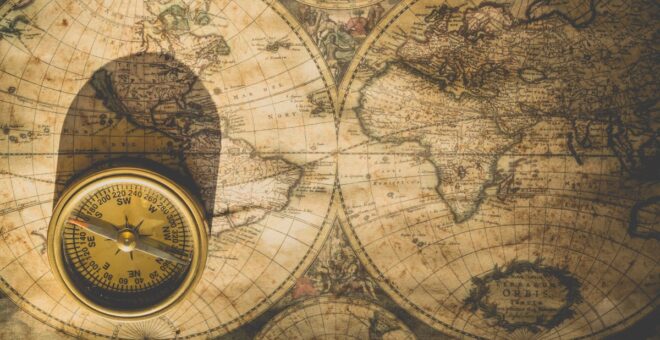 I have been asked a number of questions recently about the directional accuracy of the Bearing to Yerushalayim and Zmanim Map calculations. The rhumb line calculations are very straight forward, and I will not spend much time on it in this article. As a side note, for those interested in the subject, I would like to mention that Rabbi Gavriel Goetz recently published a very comprehensive pamphlet Gevuras Moishe on the subject and it is well worth reading.
I have been asked a number of questions recently about the directional accuracy of the Bearing to Yerushalayim and Zmanim Map calculations. The rhumb line calculations are very straight forward, and I will not spend much time on it in this article. As a side note, for those interested in the subject, I would like to mention that Rabbi Gavriel Goetz recently published a very comprehensive pamphlet Gevuras Moishe on the subject and it is well worth reading.
My original calculations and implementation of the great circle route (geodesic line) used simple spherical trigonometry to calculate the initial bearing (and distance) based on a sphere using an authalic mean radius of 6371 km. These calculations were very similar to the method used by Rabbi Yehuda Herskowitz’s article in Yeshurun volume III page 586. This model of the earth is more than accurate enough for these calculations (you would need a very accurate “nose alignment” and the total lack of shuckling to even get within a degree of being correct). Google Maps API, Yahoo Maps and Microsoft’s Live Maps for simplicity sake, all use very similar calculations as mentioned in the cfis blog quoting Morten Nielsen
Google Maps / Virtual Earth / Yahoo Maps(?) all use a spherical datum based on WGS84. That is, it has the same center, orientation and scale as WGS84, but has no flattening. The radius of the sphere is the same as the semi-major axis of WGS84 (6378137 meters).
Using a sphere, all the above-mentioned mapping APIs use spherical law of cosines formula for the calculations, that yield an identical result to the more complex Haversine formula.
Curious how accurate these calculations really are, being based on a perfect sphere and not the oblate ellipsoid/spheroid that the earth actually is, I started looking into the subject a little more. The most accurate current geoid model of the earth is the WGS84 model. The geodesist/mathematician Thaddeus Vincenty published the Vincenty formulae for this type of calculation that is said to be accurate to about one-half millimeter, more than adequate for our calculation. Chris Veness implemented this formula in JavaScript and released it under the LGPL, making it very simple to use. I slightly modified his work to allow easier interaction with the Google Maps API. The implementation that I used when I finally published the map on December 30, 2007, uses the Vincenty formula with the WGS84 geoid model (the Vincenty formula can easily be used with different goeiod models). The table below shows a comparison of the results for the initial bearing and distances of the different calculations based an a Lakewood, NJ (latitude: 40.095965°, longitude: -74.22213°) to Har Habayis (latitude: 31.77805°, longitude: 35.235149°) example.
| Calculation Method | Initial Bearing | Distance |
|---|---|---|
| 6,371 km (authalic mean radius) sphere using spherical trigonometry | 53.86555° | 9224.67442 km |
| Google Maps API 6,378.137km (WGS84 equatorial mean radius) sphere using spherical trigonometry | N/A | 9235.00819 km |
| Vincenty formula using a WGS84 geoid | 53.81786° | 9244.61686 km |
| rhumb line | 95.37152° | 9891.16074 km |